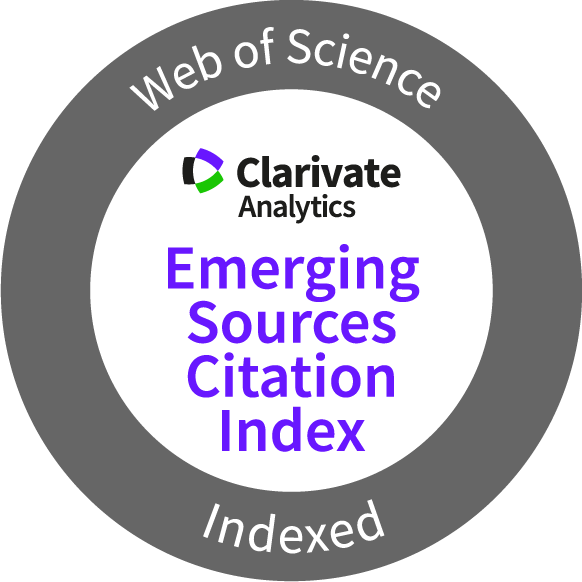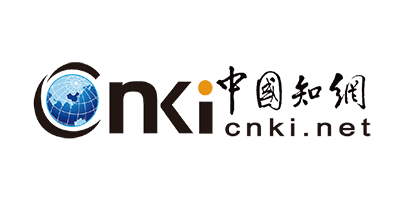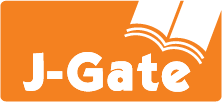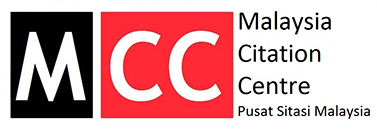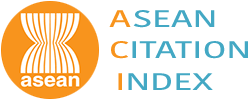Astaxanthin Nanoemulsion Pre-Supplementation Mitigates Ischaemic Stroke Injury by Enhancing Neuroprotection and Reducing Infarcted Volume Area
Keywords:
astaxanthin, blood-brain barrier, ischemic stroke, neuroprotection, nanomedicineAbstract
Ischaemic stroke is the third leading neurological disease that causes death around the world. One of the approaches to reduce severity after an ischaemic stroke is by preparing the brain for neuroprotection. Astaxanthin is a natural product produced by microalgae, Haematococcus pluvialis, against a harsh environment for its survival. It is a well-known carotenoid recognized for its anti-inflammatory and anti-apoptotic benefits. The advancements in nanomedicine of drug design and delivery systems suggest that formulating astaxanthin into a nanoemulsion could enhance its ability to penetrate the BBB and provide neuroprotection, including for ischaemic stroke injury. Rats were assigned to six groups: sham control (SCG), stroke (SG), stroke pretreated with palm olein (SOG), stroke pretreated with astaxanthin extract (SXG), stroke pretreated with astaxanthin macroemulsion (SMG), and stroke pretreated with astaxanthin nanoemulsion (SNG). Supplementation was given orally for 7 days before and once 3 hr after permanent middle cerebral artery occlusion (pMCAO). All groups were subjected to pMCAO for stroke induction except SCG, which received sham surgery. After twenty-four hr, the rats were tested for neurological tests and sacrificed for infarct volume and neuronal markers injuries quantification. This study demonstrated that pre-supplementation with astaxanthin nanoemulsion was able to minimize brain injury caused by ischemic stroke, as evidenced by a low modified neurological severity score, reduced percentage of failures between grids in the grid walking test, and increased latency on the rotarod in the rotarod test. Furthermore, pre- and post-supplementation of astaxanthin nanoemulsion demonstrated a reduction in neuronal cell death as shown by TTC staining and a reduction in neuro-ischemic markers, evidenced by a low level of S100β and NSE in the plasma. In summary, our findings suggest that astaxanthin nanoemulsion could be a promising approach in mitigating the effects of ischemic stroke.
Downloads
Metrics
References
Abdelazim, K., Ghit, A., Assal, D., Dorra, N., Noby, N., Khattab, S.N., El Feky, S.E. & Hussein, A. 2023. Production and therapeutic use of astaxanthin in the nanotechnology era. Pharmacological Reports, 75(4): 771-790. DOI: https://doi.org/10.1007/s43440-023-00488-y
Abdol Wahab, N.R., Meor Mohd Affandi, M.M.R., Fakurazi, S., Alias, E. & Hassan, H. 2022. Nanocarrier system: state-of-the-art in oral delivery of astaxanthin. Antioxidants, 11(9): 1676. DOI: https://doi.org/10.3390/antiox11091676
Abdu, H., Tadese, F. & Seyoum, G. 2021. Comparison of ischemic and hemorrhagic stroke in the medical ward of Dessie Referral Hospital, Northeast Ethiopia: a retrospective study. Neurology Research International, 2021: 9996958. DOI: https://doi.org/10.1155/2021/9996958
Achar, A., Myers, R. & Ghosh, C. 2021. Drug delivery challenges in brain disorders across the blood–brain barrier: novel methods and future considerations for improved therapy. Biomedicines, 9(12): 1834. DOI: https://doi.org/10.3390/biomedicines9121834
Ambati, R.R., Moi, P.S., Ravi, S. & Aswathanarayana, R.G. 2014. Astaxanthin: sources, extraction, stability, biological activities and its commercial applications - a review. Marine Drugs, 12(1): 128-152. DOI: https://doi.org/10.3390/md12010128
Briones-Valdivieso, C., Briones, F., Orellana-Urzúa, S., Chichiarelli, S., Saso, L. & Rodrigo, R. 2024. Novel multi-antioxidant approach for ischemic stroke therapy targeting the role of oxidative stress. Biomedicines, 12(3): 501. DOI: https://doi.org/10.3390/biomedicines12030501
Cai, W., Wu, Q., Yan, Z.Z., He, W.Z., Zhou, X.M., Zhou, L.J., Zhang, J.Y. & Zhang, X. 2021. Neuroprotective effect of ultrasound triggered astaxanthin release nanoparticles on early brain injury after subarachnoid hemorrhage. Frontiers in Chemistry, 9: 775274. DOI: https://doi.org/10.3389/fchem.2021.775274
Chang, J.C. 2020. Stroke classification: critical role of unusually large von Willebrand factor multimers and tissue factor on clinical phenotypes based on novel "two-path unifying theory" of hemostasis. Clinical and Applied Thrombosis/Hemostasis, 26: 1076029620913634. DOI: https://doi.org/10.1177/1076029620913634
Chang, Y., Lu, C.W., Chen, Y.J., Lin, T.Y., Huang, S.K. & Wang, S.J. 2018. Astaxanthin protects against kainic acid-induced seizures and pathological consequences. Neurochemistry International, 116: 85-94. DOI: https://doi.org/10.1016/j.neuint.2018.02.008
Chen, S., Wang, J., Feng, J. & Xuan, R. 2023. Research progress of Astaxanthin nano-based drug delivery system: Applications, prospects and challenges?. Frontiers in Pharmacology, 14: 1102888. DOI: https://doi.org/10.3389/fphar.2023.1102888
Chia, G.Y.Y., Yeo, S., Ho, J.S.Y., Jou, E., Yeo, L.L.L. & Tan, B.Y.Q. 2023. Neuroprotective agents in acute ischemic stroke. Exploration of Neuroprotective Therapy, 3(1): 47-70. DOI: https://doi.org/10.37349/ent.2023.00037
Domínguez-Hernández, C.R., García-Alvarado, M.A., García-Galindo, H.S., Salgado-Cervantes, M.A., Beristáin, C.I., Stability, C.I., Whitaker, S., Domínguez-Hernández, C.R., García-Alvarado, M.A., García-Galindo, H.S., Salgado-Cervantes, M.A. & Beristáin, C.I. 2016. Stability, antioxidant activity and bioavailability of nano-emulsified astaxanthin. Revista Mexicana de Ingeniería Química, 15(2): 457-468. DOI: https://doi.org/10.24275/rmiq/Alim1143
Donoso, A., González-Durán, J., Muñoz, A.A., González, P.A. & Agurto-Muñoz, C. 2021. Therapeutic uses of natural astaxanthin: an evidence-based review focused on human clinical trials. Pharmacological Research, 166: 105479. DOI: https://doi.org/10.1016/j.phrs.2021.105479
Eltokhi, A., Kurpiers, B. & Pitzer, C. 2021. Comprehensive characterization of motor and coordination functions in three adolescent wild-type mouse strains. Scientific Reports, 11(1): 6434. DOI: https://doi.org/10.1038/s41598-021-85858-3
Frank, D., Zlotnik, A., Boyko, M. & Gruenbaum, B.F. 2022. The development of novel drug treatments for stroke patients: a review. International Journal of Molecular Sciences, 23(10): 5796. DOI: https://doi.org/10.3390/ijms23105796
Gao, H. & Zheng, H. 2024. Astaxanthin expedites the healing of acute skin wounds in rats by facilitating M2 macrophage polarization and enhancing collagen secretion. Discovery Medicine, 36(185): 1180. DOI: https://doi.org/10.24976/Discov.Med.202436185.108
Giannaccare, G., Pellegrini, M., Senni, C., Bernabei, F., Scorcia, V. & Cicero, A.F.G. 2020. Clinical applications of astaxanthin in the treatment of ocular diseases: emerging insights. Marine Drugs, 18(5): 239. DOI: https://doi.org/10.3390/md18050239
Haupt, M., Gerner, S.T., Bähr, M. & Doeppner, T.R. 2023. Neuroprotective strategies for ischemic stroke—future perspectives. International Journal of Molecular Sciences, 24(5): 4334. DOI: https://doi.org/10.3390/ijms24054334
Kadry, H., Noorani, B. & Cucullo, L. 2020. A blood–brain barrier overview on structure, function, impairment, and biomarkers of integrity. Fluids and Barriers of the CNS, 17(1): 69. DOI: https://doi.org/10.1186/s12987-020-00230-3
Kamarudin, S.N., Iezhitsa, I., Tripathy, M., Alyautdin, R. & Ismail, N.M. 2020. Neuroprotective effect of poly(lactic-co-glycolic acid) nanoparticle-bound brain-derived neurotrophic factor in a permanent middle cerebral artery occlusion model of ischemia in rats. Acta Neurobiologiae Experimentalis, 80(1): 1-18. DOI: https://doi.org/10.21307/ane-2020-001
Kato, T., Kasai, T., Sato, A., Ishiwata, S., Yatsu, S., Matsumoto, H., Shitara, J., Murata, A., Shimizu, M., Suda, S., Hiki, M., Naito, R. & Daida, H. 2020. Effects of 3-month astaxanthin supplementation on cardiac function in heart failure patients with left ventricular systolic dysfunction-a pilot study. Nutrients, 12(6): 1896. DOI: https://doi.org/10.3390/nu12061896
Khandare, P., Saluja, A., Solanki, R.S., Singh, R., Vani, K., Garg, D. & Dhamija, R.K. 2022. Serum S100B and NSE levels correlate with infarct size and bladder-bowel involvement among acute ischemic stroke patients. Journal of Neurosciences in Rural Practice, 13(2): 218-225. DOI: https://doi.org/10.1055/s-0042-1743214
Kohandel, Z., Farkhondeh, T., Aschner, M., Pourbagher-Shahri, A.M. & Samarghandian, S. 2022. Anti-inflammatory action of astaxanthin and its use in the treatment of various diseases. Biomedicine and Pharmacotherapy, 145: 112179. DOI: https://doi.org/10.1016/j.biopha.2021.112179
Kriegel, C., Festag, M., Kishore, R.S.K., Roethlisberger, D. & Schmitt, G. 2020. Pediatric safety of polysorbates in drug formulations. Children, 7(1): 1. DOI: https://doi.org/10.3390/children7010001
Kuriakose, D. & Xiao, Z. 2020. Pathophysiology and treatment of stroke: present status and future perspectives. International Journal of Molecular Sciences, 21(20): 7609. DOI: https://doi.org/10.3390/ijms21207609
Lafarga, T., Sánchez-Zurano, A., Morillas-España, A. & Acién-Fernández, F.G. 2021. Extremophile microalgae as feedstock for high-value carotenoids: a review. International Journal of Food Science and Technology, 56(10): 4934-4941. DOI: https://doi.org/10.1111/ijfs.15069
Landon, R., Gueguen, V., Petite, H., Letourneur, D., Pavon-Djavid, G. & Anangnostou, F. 2020. Impact of astaxanthin on diabetes pathogenesis and chronic complications. Marine Drugs, 18(357): 357. DOI: https://doi.org/10.3390/md18070357
Lee, J., Kim, M.H. & Kim, H. 2022. Anti-oxidant and anti-inflammatory effects of astaxanthin on gastrointestinal diseases. International Journal of Molecular Sciences, 23(24): 15471. DOI: https://doi.org/10.3390/ijms232415471
Li, J., Zheng, M., Shimoni, O., Banks, W.A., Bush, A.I., Gamble, J.R. & Shi, B. 2021. Development of novel therapeutics targeting the blood–brain barrier: from barrier to carrier. Advanced Science, 8(16): 2101090. DOI: https://doi.org/10.1002/advs.202101090
Li, L., Yu, Q. & Liang, W. 2018. Use of 2,3,5-triphenyltetrazolium chloride-stained brain tissues for immunofluorescence analyses after focal cerebral ischemia in rats. Pathology Research and Practice, 214(1): 174-179. DOI: https://doi.org/10.1016/j.prp.2017.11.016
Lin, W.N., Kapupara, K., Wen, Y.T., Chen, Y.H., Pan, I.H. & Tsai, R.K. 2020. Haematococcus pluvialis-derived astaxanthin is a potential neuroprotective agent against optic nerve ischemia. Marine Drugs, 18(2): 85. DOI: https://doi.org/10.3390/md18020085
Maida, C.D., Norrito, R.L., Rizzica, S., Mazzola, M., Scarantino, E.R. & Tuttolomondo, A. 2024. Molecular pathogenesis of ischemic and hemorrhagic strokes: background and therapeutic approaches. International Journal of Molecular Sciences, 25(12): 6297. DOI: https://doi.org/10.3390/ijms25126297
Makovec, M., Skitek, M., Šimnovec, L. & Jerin, A. 2025. Neuron-specific enolase and S100B as biomarkers of ischemic brain injury during surgery. Clinics and Practice, 15(4): 74. DOI: https://doi.org/10.3390/clinpract15040074
Meléndez-Martínez, A.J., Mandić, A.I., Bantis, F., Böhm, V., Borge, G.I.A., Brnčić, M., Bysted, A., Cano, M.P., Dias, M.G., Elgersma, A., Fikselová, M., García-Alonso, J., Giuffrida, D., Gonçalves, V.S.S., Hornero-Méndez, D., Kljak, K., Lavelli, V., Manganaris, G.A., Mapelli-Brahm, P. & O'Brien, N. 2022. A comprehensive review on carotenoids in foods and feeds: status quo, applications, patents, and research needs. Critical Reviews in Food Science and Nutrition, 62(8): 1999-2049. DOI: https://doi.org/10.1080/10408398.2020.1867959
Meor Mohd Affandi, M.M.R., Julianto, T. & Majeed, A.B.A. 2012. Enhanced oral bioavailability of astaxanthin with droplet size reduction. Food Science and Technology Research, 18(4): 549-554. DOI: https://doi.org/10.3136/fstr.18.549
Mushtaq, A., Mohd Wani, S., Malik, A.R., Gull, A., Ramniwas, S., Ahmad Nayik, G., Ercisli, S., Marc, R.A., Ullah, R. & Bari, A. 2023. Recent insights into nanoemulsions: their preparation, properties and applications. Food Chemistry: X, 18: 100684. DOI: https://doi.org/10.1016/j.fochx.2023.100684
Nabi, F., Arain, M.A., Rajput, N., Alagawany, M., Soomro, J., Umer, M., Soomro, F., Wang, Z., Ye, R. & Liu, J. 2020. Health benefits of carotenoids and potential application in poultry industry: a review. Journal of Animal Physiology and Animal Nutrition, 104(6): 1809-1818. DOI: https://doi.org/10.1111/jpn.13375
Nishida, Y., Berg, P.C., Shakersain, B., Hecht, K., Takikawa, A., Tao, R., Kakuta, Y., Uragami, C., Hashimoto, H., Misawa, N. & Maoka, T. 2023. Astaxanthin: past, present, and future. Marine Drugs, 21(10): 514. DOI: https://doi.org/10.3390/md21100514
Paul, S. & Candelario-Jalil, E. 2021. Emerging neuroprotective strategies for the treatment of ischemic stroke: an overview of clinical and preclinical studies. Experimental Neurology, 335: 113518. DOI: https://doi.org/10.1016/j.expneurol.2020.113518
Preeti, Sambhakar, S., Malik, R., Bhatia, S., Al Harrasi, A., Rani, C., Saharan, R., Kumar, S., Geeta & Sehrawat, R. 2023. Nanoemulsion: an emerging novel technology for improving the bioavailability of drugs. Scientifica, 2023: 6640103. DOI: https://doi.org/10.1155/2023/6640103
Qi, H., Tian, D., Luan, F., Yang, R. & Zeng, N. 2024. Pathophysiological changes of muscle after ischemic stroke: a secondary consequence of stroke injury. Neural Regeneration Research, 19(4): 737-746. DOI: https://doi.org/10.4103/1673-5374.382221
Rahman, S.O., Panda, B.P., Parvez, S., Kaundal, M., Hussain, S., Akhtar, M. & Najmi, A.K. 2019. Neuroprotective role of astaxanthin in hippocampal insulin resistance induced by Aβ peptides in animal model of Alzheimer's disease. Biomedicine and Pharmacotherapy, 110: 47-58. DOI: https://doi.org/10.1016/j.biopha.2018.11.043
Ruan, J. & Yao, Y. 2020. Behavioral tests in rodent models of stroke. Brain Hemorrhages, 1(4): 171-184. DOI: https://doi.org/10.1016/j.hest.2020.09.001
Sabjan, K.B., Munawar, S.M., Rajendiran, D., Vinoji, S.K. & Kasinathan, K. 2019. Nanoemulsion as oral drug delivery - a review. Current Drug Research Reviews, 12(1): 4-15. DOI: https://doi.org/10.2174/2589977511666191024173508
Saini, V., Guada, L. & Yavagal, D.R. 2021. Global epidemiology of stroke and access to acute ischemic stroke interventions. Neurology, 97(20): S6-S16. DOI: https://doi.org/10.1212/WNL.0000000000012781
Salaudeen, M.A., Bello, N., Danraka, R.N. & Ammani, M.L. 2024. Understanding the pathophysiology of ischemic stroke: the basis of current therapies and opportunity for new ones. Biomolecules, 14(3): 305. DOI: https://doi.org/10.3390/biom14030305
Shatoor, A.S. & Al Humayed, S. 2021. Astaxanthin ameliorates high-fat diet-induced cardiac damage and fibrosis by upregulating and activating SIRT1. Saudi Journal of Biological Sciences, 28(12): 7012-7021. DOI: https://doi.org/10.1016/j.sjbs.2021.07.079
Shi, X., Bai, H., Wang, J., Wang, J., Huang, L., He, M., Zheng, X., Duan, Z., Chen, D., Zhang, J., Chen, X. & Wang, J. 2021. Behavioral assessment of sensory, motor, emotion, and cognition in rodent models of intracerebral hemorrhage. Frontiers in Neurology, 12: 667511. DOI: https://doi.org/10.3389/fneur.2021.667511
Si, P. & Zhu, C. 2022. Biological and neurological activities of astaxanthin. Molecular Medicine Reports, 26(4): 12816. DOI: https://doi.org/10.3892/mmr.2022.12816
Singh, I.R. & Pulikkal, A.K. 2022. Preparation, stability and biological activity of essential oil-based nano emulsions: a comprehensive review. OpenNano, 8: 100066. DOI: https://doi.org/10.1016/j.onano.2022.100066
Smejkal, G.B., Ting, E.Y., Nambi, K.N.A., Schumacher, R.T. & Lazarev, A.V. 2021. Characterization of astaxanthin nanoemulsions produced by intense fluid shear through a self-throttling nanometer range annular orifice valve-based high-pressure homogenizer. Molecules, 26(10): 2856. DOI: https://doi.org/10.3390/molecules26102856
Sodaei, F. & Shahmaei, V. 2020. Identification of penumbra in acute ischemic stroke using multimodal MR imaging analysis: a case report study. Radiology Case Reports, 15(10): 2041-2046. DOI: https://doi.org/10.1016/j.radcr.2020.07.066
Sun, S.Q., Zhao, Y.X., Li, S.Y., Qiang, J.W. & Ji, Y.Z. 2020. Anti-tumor effects of astaxanthin by inhibition of the expression of STAT3 in prostate cancer. Marine Drugs, 18(8): 415. DOI: https://doi.org/10.3390/md18080415
Terao, J. 2023. Revisiting carotenoids as dietary antioxidants for human health and disease prevention. Food and Function, 14(17): 7799-7824. DOI: https://doi.org/10.1039/D3FO02330C
Wan Chik, M., Meor Mohd Affandi, M.M.R. & Singh, G.K.S. 2022. Detection of astaxanthin at different regions of the brain in rats treated with astaxanthin nanoemulsion. Journal of Pharmacy and Bioallied Sciences, 14(1): 25-30. DOI: https://doi.org/10.4103/jpbs.jpbs_464_21
Wang, S. & Qi, X. 2022. The putative role of astaxanthin in neuroinflammation modulation: mechanisms and therapeutic potential. Frontiers in Pharmacology, 13: 916653. DOI: https://doi.org/10.3389/fphar.2022.916653
Wang, Y., Zhang, Q., Zhang, S., Qi, J. & Li, L. 2023. The superiority and feasibility of 2,3,5-triphenyltetrazolium chloride–stained brain tissues for molecular biology experiments based on microglial properties. Animal Models and Experimental Medicine, 6(2): 111-119. DOI: https://doi.org/10.1002/ame2.12312
Wilson, R.J., Li, Y., Yang, G. & Zhao, C.X. 2022. Nanoemulsions for drug delivery. Particuology, 64: 85-97. DOI: https://doi.org/10.1016/j.partic.2021.05.009
Wu, D., Chen, Q., Chen, X., Han, F., Chen, Z. & Wang, Y. 2023. The blood–brain barrier: structure, regulation, and drug delivery. Signal Transduction and Targeted Therapy, 8(1): 217. DOI: https://doi.org/10.1038/s41392-023-01481-w
Wu, Y., Bashir, M.A., Shao, C., Wang, H., Zhu, J. & Huang, Q. 2024. Astaxanthin targets IL-6 and alleviates the LPS-induced adverse inflammatory response of macrophages. Food and Function, 15(8): 4207-4222. DOI: https://doi.org/10.1039/D4FO00610K
Xie, Q., Li, H., Lu, D., Yuan, J., Ma, R., Li, J., Ren, M., Li, Y., Chen, H., Wang, J. & Gong, D. 2021. Neuroprotective effect for cerebral ischemia by natural products: a review. Frontiers in Pharmacology, 12: 607412. DOI: https://doi.org/10.3389/fphar.2021.607412
Yang, S.H. & Liu, R. 2021. Four decades of ischemic penumbra and its implication for ischemic stroke. Translational Stroke Research, 12(6): 937-945. DOI: https://doi.org/10.1007/s12975-021-00916-2
Zeng, L., Hu, S., Zeng, L., Chen, R., Li, H., Yu, J. & Yang, H. 2023. Animal models of ischemic stroke with different forms of middle cerebral artery occlusion. Brain Sciences, 13(7): 1007. DOI: https://doi.org/10.3390/brainsci13071007
Zhang, M., Cui, Z., Cui, H., Wang, Y. & Zhong, C. 2017. Astaxanthin protects astrocytes against trauma-induced apoptosis through inhibition of NKCC1 expression via the NF-ΚB signaling pathway. BMC Neuroscience, 18(1): 67. DOI: https://doi.org/10.1186/s12868-017-0358-z
Zhang, X.S., Lu, Y., Li, W., Tao, T., Peng, L., Wang, W.H., Gao, S., Liu, C., Zhuang, Z., Xia, D.Y., Hang, C.H. & Li, W. 2021. Astaxanthin ameliorates oxidative stress and neuronal apoptosis via SIRT1/NRF2/Prx2/ASK1/p38 after traumatic brain injury in mice. British Journal of Pharmacology, 178(5): 1114-1132. DOI: https://doi.org/10.1111/bph.15346
Published
How to Cite
Issue
Section
Any reproduction of figures, tables and illustrations must obtain written permission from the Chief Editor (wicki@ukm.edu.my). No part of the journal may be reproduced without the editor’s permission
Funding data
-
Ministry of Higher Education, Malaysia
Grant numbers 600-RMC/FRGS 5/3 (151/2021)





